GamuT Audio Zodiac Review
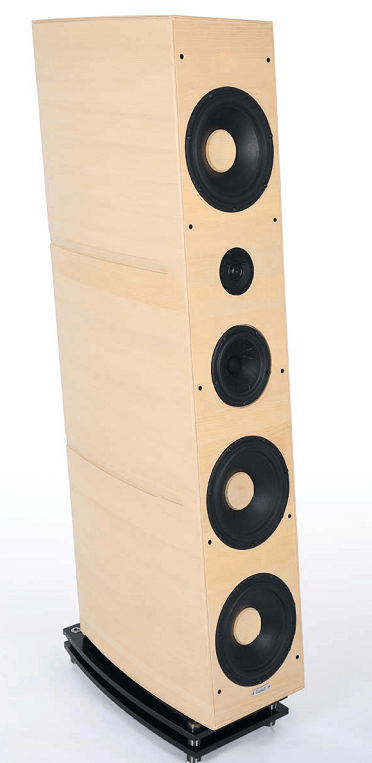
GamuT Audio Zodiac floorstanding loudspeaker
by Alan Sircom
For good or ill, when it comes to audio, we live in a time of flagships and statements. There is a drive in many manufacturers to build the biggest and the best product they can, driven in part by a coterie of distributors, dealers, high-end buyers, and magazines who are perpetually hungry for the Next Big. Best Thing. In many cases, that bigger-is-better mindset that drives brands to make a statement piece ends up making a product that sacrifices all that was good about the performance of the brand in the process. We are often faced with a product that is not necessarily better than the rank- and-file cheaper models, just bigger, in looks, price-tag, and – most importantly – price.

GamuT’s Zodiac floor-standing loudspeaker is one of the rare exceptions. A true statement piece by the brand; a three- way, five driver, impulse-optimized bass reflex design, tuned by ear. just 12 of these models will be made per year… hence the name ‘Zodiac’. And, as fitting with that title, each month’s model will bear the relevant astrological star sign. As a Sagittarian, my horoscope says that I think astrology is complete nonsense, but for a way to name a strictly limited flagship without using serial numbers this is a good idea. The problem with limited runs and serial numbers is everyone wants ‘007′ and no-one (in Asia, at least) wants ’004′. By replacing that with star signs, it resolves this issue… sort of – I can see a potential problem when two people with the star sign Taurus fight over who gets this year’s model… no bull!
As with any modern GamuT design, the Zodiac is the product of Benno Baun
“Practically everything about the Zodiac is new, even though it seems like a distillation of the technology found in the rest of the range”
► Meldgaard, the company’s chief designer, who also stepped up to the CEO plate back in 2015. Although there is a lot of ‘because the stakes are so low’ power-plays and petty politics in audio’s high-end, Benno seems remarkably and refreshingly immune to such things. Instead, first and last, he’s a really passionate music lover: even in an industry where passionate music lovers gravitate. Benno is the kind of guy who will happily spend all day testing or demonstrating equipment, and all evening sitting back and listening to music. Which is perhaps why GamuT doesn’t just make electronics, speakers, and cables… it also makes the ‘Lobster’ listening chair! Such dedication to the Cause is actually quite rare. This constant exposure to music of all kinds underlines Benno’s design ethos – the technical development is not given a back seat, but there is a good deal of reliance on how it sounds. Benno is also an extremely nice guy. and that will become significant later in the review. That makes for consistently good sounding products, and that word ‘consistently’ is important to the Zodiac.
There is a strong, unbroken family line running from GamuT’s RS3i stand-mount, through the RS5i and RS7i floor-standers. up to the Zodiac. The top model adds height and is correspondingly wider thanks in part to larger bass units, but the lines are identical. In no small part, this speaks to the almost fanatical loyalty of GamuT’s user base, who are well known for only changing up through models in the GamuT range. As such, it’s likely that many Zodiac owners will be trading up from their RS7 and RS7i loudspeakers. That’s not to say non-GamuT listeners will ignore the Zodiac, but that those who already appreciate what GamuT speakers do so well will be first in line to move up to the company’s best design. That being said. GamuT’s loyalty among its clientele is predicated upon making products that live up to the company’s ethos and performance, and if a flagship was just another big sounding over-stuffed speaker design, they would likely stay away from the Zodiac.
Practically everything about the Zodiac is new. even though it seems like a distillation of the technology found in the rest of the range. It uses a new 38mm silk cone ring radiator tweeter with a neodymium magnet. This is joined by a single 178mm sliced paper cone mid-range unit, which is impregnated with a custom blend of natural oils, and a trio of 254mm paper cone bass units, that are made with solid wood dust caps sourced from the same material found in the cabinet itself. The Zodiacs also have all drivers phase aligned – at all frequencies – measured from the listening position, for optimum timing.
That cabinet itself is made from real wood, hand-selected for its acoustic properties from a sustainable source, and then constructed by Kvist of Denmark. The internal construction features complex, fan-shaped internal bracing strategically placed inside the cabinet. This helps reduce the amount of internal damping inside the loudspeaker while also helping to control its vibrational energy inside and out.

Where Benno’s attention to detail begins to turn into something closer to obsession is in the details. And the Zodiac is a loudspeaker of details. So. where most loudspeaker designers are content to use some form of ABS to construct the port, Benno goes the whole hog and builds custom ports out of brass and stainless steel. These two ports are at the rear of the loudspeaker and therefore might not get much daily observation, but Benno still makes them look like the loudspeaker has its own brass section. This is not simply cosmetic, as stainless steel and brass will help air-flow dynamics, although arguably there have been significant improvements in air-flow modeling that move out of the wind-tunnel phase of development. You could point to almost every corner, curve, foot, grill section, or driver layout and find the same almost obsessive attention to detail.
Behind al this is a lot of engineering knowledge, too. GamuT’s product line contains no devices that are the result of a dream or hallucination. They are built along strict objective and observational lines, drawing upon decades of psycho-acoustic research, measurement protocols, and good of fashioned listening tests. The company does place great attention on the listening test, which seems to alarm those who are afraid of their own decision-making potential, but typically such folk are more about the criticizing than the owning, especially when it comes to audacious flagship designs like the Zodiac.
There is, of course, an obvious partnership in the GamuT D3i dual mono preamplifier and M250i mono power amplifiers, as well as the company’s Reference cables. These were used by Benno as the upstream benchmark for the Zodiac. And, as discussed earlier, given many of Zodiac’s early adopters will likely be existing GamuT users, using the company’s amps to partner the ►
“Benno has achieved the very, very difficult task of making the Zodiac seem like a small loudspeaker with some very big friends”
► speakers is a logical option. It’s not the only option of course, and there is a plethora of high-end solid-state (or big power tube amps) that would fit the bill perfectly. But the GamuT electronics, cable, and speaker combo works so well together, why break up the band? Our experience of the GamuT Zodiac came fettled this way.
Installation is easy – Benno does it! The cost of the Zodiac includes installation by Benno personally, no matter where in the world you are (OK, maybe not North Korea or Syria). This is why it helps that Benno is actually a really nice guy and fun to be around, because he’ll spend a day or two in your company fine tuning the installation of the Zodiac in your room, and the last thing you need in those circumstances is either someone with an ego the size of Copenhagen, or someone who continually pulls a face like a bulldog chewing a wasp. Expect long nights of listening while Benno’s around, especially if you use vinyl or open reel. At the end. you’ll have a fine set of loudspeakers, optimized for your room, and about 30 new ‘must-own’ albums on your wish-list.
Back to the Zodiac. Benno has achieved the very, very difficult task of making the Zodiac seem like a small loudspeaker with some big friends. There is no ‘big loudspeaker syndrome’ here, where a large loudspeaker is constantly ‘upscaling’ sounds in an impressive, yet ultimately incorrect, manner. There are no 20m wide pianos or 10m tall singers in the room. Even close microphone technique – which can almost guarantee ‘big’ sounds throughout – have a correct sense of scale and instrument/vocal size. Going back to larger scaled loudspeakers (paradoxically, even those smaller than the Zodiac) is like listening to a PA system after hearing the real thing. This is something we British seem pre-programmed to parse, but for the wrong reason: because of small rooms and even smaller loudspeaker designs, UK audiophile listeners have a keen appreciation of ‘right-sized’ voices and instrument sounds in the room. Unfortunately, we often appreciate that accuracy of image size at the expense of dynamic range, headroom, and micro-dynamic resolution, bass extension, solidity, an ability to cope with large scale orchestral works without some form of image compression, and ultimate in-room volume. An ideal loudspeaker would excel at all these things and have that correct image size that can scale to fit whatever music is playing. And the Zodiac gets surprisingly close to that ‘ideal’ loudspeaker.
With this comes an excellent sense of overall timing and coherence to the music. The Zodiac sounds less like a collection of loudspeaker drivers playing in a room and more like the real thing. Granted at this heady level, there is an expectation of outstanding overall coherence, but even in such company, the Zodiac stands out as exceptionally fine. We listened to a huge range of music through the Zodiac, everything from the pomp and bombast of early Queen records to the modern murder ballads of Richmond Fontaine’s Post to Wire ►
“There are a lot of good loudspeakers that hit those audiophile buttons in their sound, but the Zodiac makes those buttons fun!”
► LP [El Cortez records], moving from Mozart piano concertos and small smoky jazz dubs of the 1950s in the process. At all times, the Zodiac’s preternatural coherence and ability to scale up or down as needed proved captivating. One track became an album, which became a catalog, and so on.
Of course the test discs come out, especially in a professional capacity. The old Deccas as ‘absolute’ benchmarks, the audiophile pressings that actually tell you almost nothing but sound great doing so. and even the kind of recordings that are only played by wannabe engineers. But the more you listen to the Zodiac, the more you start to realize all this is smoke and mirrors. You stop playing what you think you should play, and get on with playing music you want to play. Yes. in the process, you do get a loudspeaker that ticks those audiophile boxes, with glorious, shimmering highs, dark, brooding lows, and open, natural mids. You get a loudspeaker that plays music with an open and expressive sound-stage. and sublime micro- and macro dynamic contrasts and shades. But you also get a loudspeaker that exposes all those terms as arch, because it makes you set aside such parameters and simply enjoy whatever music is coming out of the Zodiac, ornate and clichéd audiophie terminology be damned. The thing is. there are a lot of good loudspeakers that hit those audiophile buttons in their sound, but the Zodiac makes those buttons fun! That’s the real part of the Zodiac magic.
As an aside, the Zodiac shows just how bent out of shape some aspects of high-end audio have become. This is a flagship loudspeaker. That is a tot of money for a loudspeaker, but in today’s climate, it’s not a tot of money for a flagship. There are other manufacturers who make top end products costing a quarter of a million or more. Yes. you are buying a tot more loudspeaker real estate, often ending up with a loudspeaker that physically towers over the already quite large Zodiac. And yes. when the atmosphere gets this rarefied, you do generally get a performance that at least equals and might better the Zodiac.
Earlier in this review, I praised GamuT’s stand mounts like the RS3i. and there’s a reason those classic speakers are so beloved. That reason has translated directly to the Zodiac, too. In essence, if you like the sound of the RS3i and want more without getting less in the process, the Zodiac is the perfect superhero. Zodiac has managed to bulk up without getting flabby, and it’s become an all-rounder in the process. It’s become a decathlete instead of a bodybuilder. That’s no mean feat (as so many flagships end up losing what makes the range popular in order to meet the requirement of being a huge statement piece, and makes the Zodiac not only the latest, but also the best of what GamuT can do in an already great range. You would think that pretty obvious in a flagship product, but it’s not – the Zodiac is rare in not throwing the baby out with the bathwater. Very highly recommended!
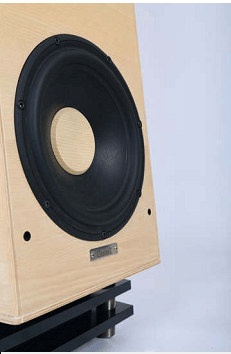
TECHNICAL SPECIFICATIONS
Type: Three-way. impulse optimised boss reflex floorstanding loudspeaker
Drive unit complement: 1x38mm ring radiator tweeter, 1 x 178mm sliced paper cone midrange, 3x 250mm paper cone boss drivers
Frequency response: 16Hz-40kHz
Crossover frequencies: 350Hz. 2.25kHz
Sensitivity: 90dB SPL (2.83V/1m)
Nominal Impedance: 4 Ohm
Minimum Impedance: 2.9Ohm at 180Hz
Finish: Ivory, Maroon, Ruby, Onyx tinted varnish
Dimensions (HxWxD): 165 x 31 x 68cm
Weight: 196kg each


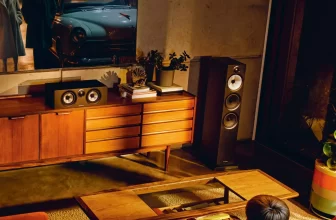
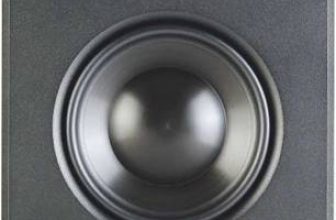
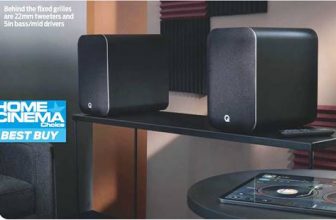
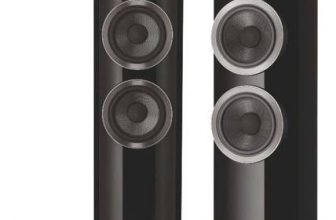
I wonder how they sound compared to a pair of Quad 57 electrostatics…..driven by Quad II triode-wired amplifiers…….. good luck!